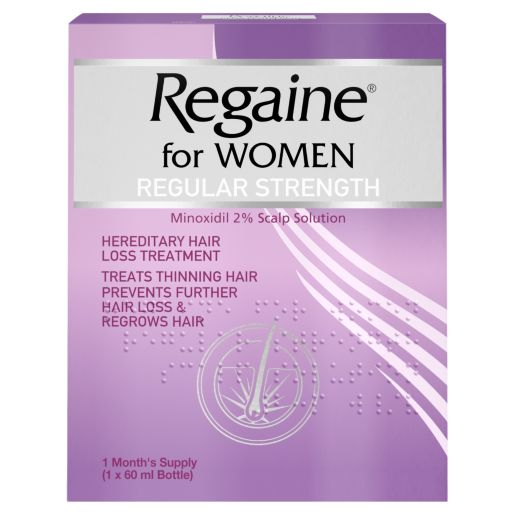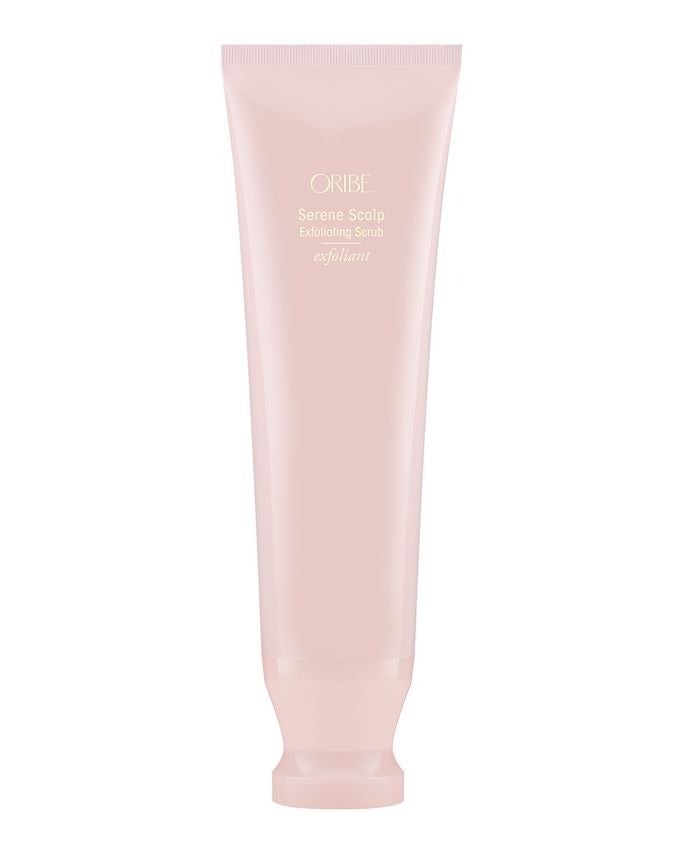Hair Loss Is So Common Among Black Women; Here’s How I Dealt With Mine
My friends would call me an open book, but for years I kept a secret: I was losing my hair. It happened slowly, but year after year, my hairline became increasingly more sparse until one day I woke up and noticed a shiny, smooth, bare patch of skin nestled a few rows into my retreating hairline. I was devastated. How was it possible that in my early 30s I was already experiencing hair loss in such a noticeable way?
Inspired by the natural hair movement and the hope that I could reverse the thinning, I gave up chemically straightening my hair three years prior to any hair loss. To discover my efforts were in vain left me deflated and embarrassed. I'm not alone, though. The NHS has estimated that 8 million women in the UK experience hair loss by the age of 50, and according to Dr Ifeoma Ejikeme, founder & medical director of Adonia Medical Clinic, almost half of all black women experience some form of hair loss.
AdvertisementADVERTISEMENT
What causes hair loss for Black women?
"Like in many cultures, Black women view their hair as their crowning glory and our communities put major value on having full, thick, long hair," says Dr Ejikeme. "With thinning hair a common problem among black and mixed heritage women, embarrassment is rife," she says. While I could have hidden my hair loss under a wig or weave, I chose styles that strategically concealed my bald patch. But I was left wondering why my hair was so different to that of my white mother, who in her 60s still had a full head of hair (despite dying it every colour under the sun, booking in for perms and even straightening it with a clothes iron in her heyday). Dr Ejikeme tells me it's to do with hair type. "Instead of being round or oval like Caucasian and Asian follicles, afro hair follicles are elliptical in shape, with a curved hair follicle bulb," she explains. "This is what makes our hair curly and coiled. Afro hair is lower in density and forms knots easily, so it is fragile and prone to breakage. Plus, our hair tends to lack moisture, as the twists and turns make it difficult for sebum to travel from root to tip as it does on straight hair."
Dr Ejikeme also adds that afro hair has a greater propensity for developing hair loss disorders like traction alopecia (caused by hairstyles which repeatedly pull on the hair) and central centrifugal cicatricial alopecia. "This develops in the middle of the scalp and spreads outwards. It almost looks like Christmas tree," says Dr Ejikeme. "It is the most common form of primary scarring alopecia in people of African descent and affects more women than men." While this disorder is not fully understood, it seems our hair practices (from washing and straightening, to braiding and weave-wearing) result in hair loss and breakage in large numbers.
AdvertisementADVERTISEMENT
What are the best treatments for hair loss?
As a beauty editor, I knew that ditching relaxer wasn't enough to revive the hair I had lost. Along with a major overhaul of my styling and washing practises, I decided to see an expert for treatment advice. Harrods' resident trichologist Ricardo Vila Nova advised a blood test and a DNA analysis of my hair. By magnifying and analysing a single strand he could identify the emotional, nutritional, hormonal, environmental and genetic factors affecting the health and condition of my hair and scalp. The immediate diagnosis? Low levels of vitamin D and a borderline under-active thyroid. Plus, extreme hair dryness and low cellular activity (responsible for the production of healthy hair cells). This wasn't surprising considering my thinning and breakage, and so began the start of my hair health journey.
Here are the various treatments recommended to me. Plus, what the hair experts really think about them.
Scalp Injections & Nourishing Hair Oils
As a regular Botox user, I'm no stranger to needles. Vila Nova recommended I try a cocktail of vitamins injected directly into my scalp, but I wondered why oral options weren't just as good. "Injections allow for a personalised blend of healthy hair ingredients to be deposited directly into the blood stream exactly where they are needed, i.e. the scalp," Vila Nova told me. When taking a supplement for hair, Vila Nova explains that any nutrients will benefit the body's vital organs before making an impact on hair, or skin and nails; they are the last to see any benefits.
AdvertisementADVERTISEMENT
A mix of vitamins B1, B5, B6 and B12 were administered alongside a tsubuaki oil and castor oil head massage. According to celebrity hairstylist, Dionne Smith, castor oil is a go-to oil for afro-textured hair types, as it helps to combat dryness and adds moisture to the hair. It's also known to strengthen hair and to stimulate hair growth. These nourishing oils rehydrated my parched hair and scalp, while the massage relaxed my nerve receptors to help dull any pain. Vila Nova injected along sectioned rows that ran from my hairline down, and finally, all the way around my head from the front to the back. I didn't experience any downtime but it does require patience. I actually started to notice little hairs sprouting from my bald patch around four weeks later. Monthly treatments are recommended for best results, and prices start at £350.
Microneedling
More commonly performed on the face, microneedling consists of rolling tiny needles over your skin. The needles cause small injuries, encouraging skin to produce more firming collagen when it repairs itself. Vila Nova mentions that the scalp also loses collagen with age, and this can potentially slow down hair growth, leaving some hair follicles dormant. "Compromised hair follicles can't produce long, strong hair," he told me, "but microneedling helps boost blood flow, allows treatment serums to penetrate deeper within the skin, and boosts hair follicle strength."
This was convincing. I've had monthly microneedling sessions on my face for years, and after a pain free scalp injection session, I thought this treatment would be a breeze. I was wrong. The hair loss treatment was bearable but uncomfortable in comparison, as the needles went back and forth multiple times. Though a tad painful, the needle pricks open a pathway allowing for a cocktail of vitamins, peptides (essentially proteins), hydrating hyaluronic acid, and growth stimulators to penetrate my scalp, helping to accelerate hair density, strength and hydration. When it comes to hair growth, no treatment works instantly and this is no different. Results may be seen over time but regular sessions are required.
AdvertisementADVERTISEMENT
Supplements
Hair loss supplements are popular, but hair expert Dr Nilofer Farjo of the Farjo Hair Institute mentions that many may promise too much and lots of brands mis-sell them. Of course, supplements can be used as support alongside wider treatments, but Dr Nilofer Farjo says they are "beneficial if hair loss is at a very early stage, or the objective is to improve the quality of existing hairs."
Interestingly, research shows that very low vitamin D levels can potentially lead to hair loss or stunted growth. Dr Ejikeme points out that a lack of this essential vitamin is common among Black people living in the diaspora, as melanin provides protection from the sun. At the start of my hair journey my blood test showed low vitamin D levels, likely due to years of fad dieting. Thankfully, this news coincided with a major change in the way I viewed my body and how I wanted to treat it going forward. I added fatty fish like salmon and mackerel back into my diet and started to take a vitamin D supplement to push my levels up to where they needed to be. The NHS also pinpoints meat, poultry and eggs as some foods which contain vitamin D.
Scalp Scrubs
Since ditching the relaxer and embracing my natural texture, I'm using a lot more styling products than before, such as leave-in conditioner, oils, mousse and gel. They build up on my scalp and are hard to remove with gentle cleansing formulas, but washing more often didn't seem wise, as like most afro textured hair, mine is quite dry. Instead, I invested in a hair growth stimulating scalp scrub.
AdvertisementADVERTISEMENT
"Scalp scrubs help rid skin of follicle-blocking dead cells, product build-up and excess oil," says Vila Nova. "In turn, this can potentially lower the shedding rate of your hair, encourage hair follicles to grow healthy hair and alleviate dryness." I use the Oribe Serene Scalp Exfoliating Scrub, £46.50, once every two weeks as the beads help gently remove product, while the exfoliating AHAs (alpha hydroxy acids) cut through dirt. After consulting with Vila Nova, he recommended that I leave the formula on my scalp for five minutes so that the acids can do their thing before gently massaging it into my scalp. I recognised instantly how effective the notion of scrubbing is for removing that film of product build-up and dead skin I always encounter by wash day. I imagine this has cleared the way for healthier hair to grow. I now shampoo less, too, so my scalp retains its natural oils and my curls are far less dry.
Minoxidil
Since the pandemic started, stress has played a major role in my hair loss, and it's proving hard to coax hair out of the bald patch I developed a few months into 2020. There are some hairs, but progress has been slow, so I decided to up the ante and introduce topical Minoxidil into my hair routine alongside practising some stress busting techniques. While there are countless stimulating oils and scalp scrubs out there, the only proven topical hair growth treatment is Minoxidil, and this is recommended by trichologists, GPs and dermatologists. It doesn't require a prescription and can be bought over the counter for at-home use. "Minoxidil is widely known as Regaine," explains hair expert Dr Bessam Farjo of Farjo Hair Institute. "It is applied as a foam or lotion," he adds. "These are the only FDA or MHRA-approved medications to treat patterned hair loss, but the combination of low-level laser and Minoxidil can be quite effective in women."
AdvertisementADVERTISEMENT
Alongside laser, Dr Bessam Farjo recommends platelet rich plasma (PRP). Enitan Agidee, hair coach at Healthy Hair Studio, recently told R29 that this is especially beneficial for traction alopecia in afro hair. Here's an honest review of both treatments.
My progress over the course of the last two years has been encouraging and my receding hair line is now home to lots of baby hairs that I hope will grow nice and long. I've noticed major signs of improvement thanks to a healthy diet, needle-based treatments, plus a reduction in heat usage and tight hairstyles. My hair is growing faster than ever before, is no longer dry, breaks far less and feels so much softer and looks shiny.
After months of treatment, I've realised that addressing hair loss means looking at multiple factors, from lifestyle to styling practices and more; not just one thing. If I've learnt anything, though, it's best not to wait years to treat hair loss. If private hair treatments aren't an option for you, Dr Ejikeme hits home the importance of visiting your GP. My advice? Don't allow yourself to be fobbed off, especially if your doctor doesn't have an understanding of afro hair. Ask for blood tests and to be referred to a dermatologist, who will be able to point you in the right direction.
AdvertisementADVERTISEMENT








